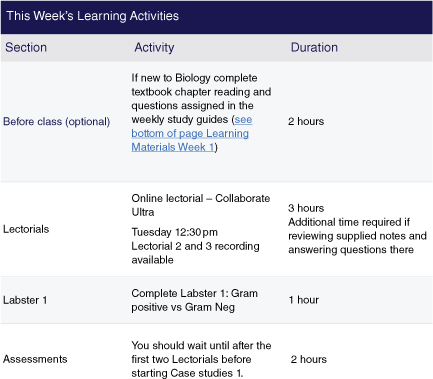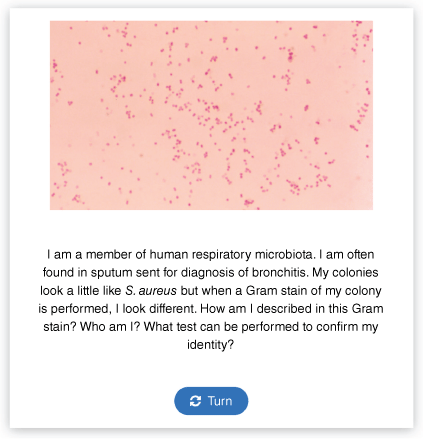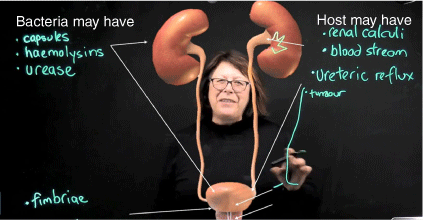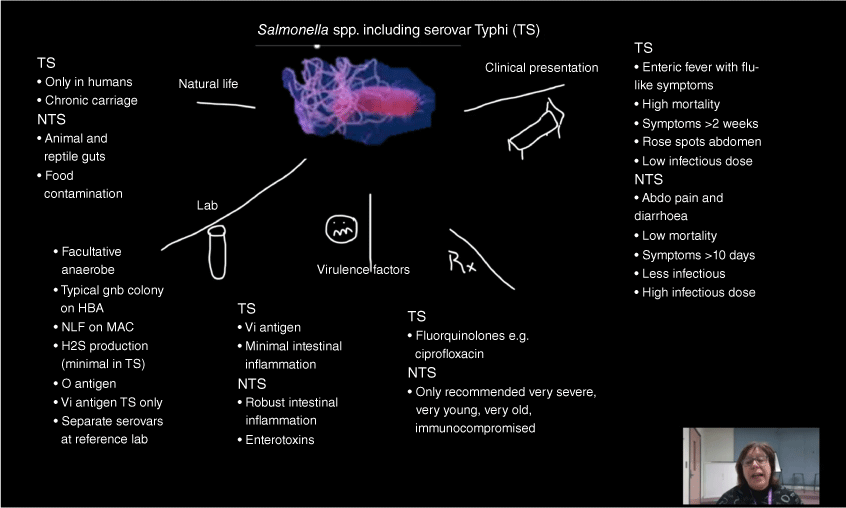What chunking of microbiology learning materials looks like today using technology and learning objects
Danilla Grando A *A School of Science, RMIT University, Bundoora, Vic. 3083, Australia.

Danilla Grando is Associate Professor and coordinator of Medical Microbiology teaching at RMIT University in the School of Science. She is the recipient of several national awards for her teaching practice. |
Microbiology Australia 44(3) 127-130 https://doi.org/10.1071/MA23037
Submitted: 6 June 2023 Accepted: 20 June 2023 Published: 7 July 2023
© 2023 The Author(s) (or their employer(s)). Published by CSIRO Publishing on behalf of the ASM. This is an open access article distributed under the Creative Commons Attribution-NonCommercial-NoDerivatives 4.0 International License (CC BY-NC-ND)
Abstract
I have a saying printed and placed on my office wall, ‘Create learning environments so that all can meet the learning objectives’. It seems this task has become increasingly difficult to meet as students may be juggling a full-time workload and a full-time study load. However, this has been made possible as many programs no longer require students to sit exams, but rather are assessing students through activities and assignments. For students, finding the time to engage with lecture content competes with completing assessment activities. It is important to firstly give students the motivation for why completion of learning materials is important and then maintain their engagement with the learning materials. This article provides some techniques to help maintain student engagement through chunked learning activities.
In the knowledge-based programs like microbiology, learning poses significant challenges as we require students to have an understanding of the terms used. For medical microbiology, we require graduates to have knowledge of the organisms and the diseases they produce as well as symptoms, prognosis, treatments and prevention. So how do we help students meet the workload requirements of content heavy courses and maintain engagement? One answer is to chunk content into manageable portions.
Blended learning environments allow students to learn theory at a time and place of their own choosing whilst having face-to-face classes to learn skills. In the process of creating such an environment, I have found there are many tips and tricks to design the online component of great blended learning.1 These design concepts are also used when chunking of learning material provides manageable segments of related learning materials. The theory behind, and the benefits of chunking are summarised by E. Paulson.2 In this summary, Paulson provides an interesting citation from Lang3:
You can’t fire the synapses in your students’ brains. For the connections to be meaningful and effective, the students have to form them. Your task is to create an environment that facilitates the formation of those connections rather than simply lecturing at them about connections.
At RMIT, our learning design team suggests we structure our weekly modules into an overview of the week’s activities, followed by the learning activities page and a final page with review of learning. The overview page has a short video to engage the students. There is a table on that page that is very instructive from an academic’s point of view (Fig. 1), providing a suggestion for how much time it will take for the students to perform all the activities that week.
An example of how quickly the available hours of study available to students will be consumed by online learning activities.

This now brings me to the learning activities page. Will it simply be three recordings of the lectorials? How can it still be called a lectorial if it is a recording? Will students maintain concentration for each of the 50-min lectorials? I have started the conversion of these recordings into chunked content. Each of these chunks is interspersed with an activity to help maintain engagement. H5P is an easy way to add activity without the need to navigate away from the page. H5P is an internet browser plugin and most webpage creators within learning management systems have enabled access. An easy beginner example is a flip card (Fig. 2). A personal favourite of mine is hot spotting (Fig. 3).
An example of H5P using hotspots to identify diagnostic features in a Gram stain of sputum from a patient with aspiration pneumonia.

Finally, how can H5P be used to convert lecture chunks into lectorial chunks? Unfortunately, it can be challenging to maintain students’ attention, even for short periods of time. Recently, I have started using H5P to insert questions directly into the video chunks. H5P can be used to stop a video and ask questions within the video. The student must interact to move forward in the video.
Chunking can also be used for assessments. There is evidence to support the chunking of case studies into videos. Chi et al.4 reported that video case-based learning significantly improved the student learning outcomes. This finding is supported by student comments as shown in the following student feedback in one of my courses:
Case study assessments with the videos to watch were so much better than the one without the accompanying videos. Made the assessment more engaging, and had much more active learning. Made the assessment much easier and enjoyable to work through.
However, it is important to consider cognitive load when designing video and other learning objects. The principles behind good video production for education are summarised by Brame5 and the considerations for cognitive load covered by Grando.1
Chunking is also excellent for flipping the classroom. In one of my courses, I require students to work through content on a weekly basis (an example of which was shown in Fig. 3) before attending practical class. To ensure students have engaged with the material, they are tested in a short 10-min quiz at the conclusion of the practical class. Students have commented that this has kept them more focused and disciplined throughout the semester.
Chunking using Microsoft PowerPoint-recorded segments is just one way to record video. Another is using Lightboards (www.lightboardsaustralia.com.au/lightboard-for-teaching). Recently, we have begun to use Lightboards at RMIT. The advantage of using Lightboards is that you face the audience while using the board as compared to having your back to the audience when writing on the board. An example of how I use the Lightboard in my teaching (Fig. 4) can be seen here: https://rmit-arc.instructuremedia.com/embed/3686b92a-ffb4-47bc-b1bb-334de0b5ab4f.
Other examples from La Trobe University are available here: www.latrobe.edu.au/mylatrobe/high-tech-teaching-space-makes-online-lectures-a-must-see-for-students-learning-at-home/. Steve Griffiths, writing for the National Education Summit,6 outlines some empirical research that supports that Lightboards make a positive difference to student learning. He reviews a paper by Fiorella and Mayer7 that proposes that when students see the instructor’s hand on the board it provides a ‘social cue that motivates learners to make sense of the material’.7 Feedback from students was solicited on my provided example video:
I loved the way the video was presented with the whiteboard and diagram. Not sure how you did that but I thought it was an interactive and fun way to present information! I also appreciated the systemic focus; the factors that bacteria have and that of the host – and you went through factors relating to every component of the urinary system which was great. Having it all presented together on a diagram helps tie it all together.
I have seen plenty of patients that present in the categories you listed; diabetic, pregnant, catheterised patients and so on. This would be beneficial for students to know before they go on placement, because I certainly did not know this. It will help students to easily understand the patient’s history from the indicated clinical notes before reading the urine culture plates. It helps to put it into perspective; on the urine reading bench, it can feel like you’re just reading 300 plates a day, without thinking of the 300 patients who are presenting with suspected UTIs. Your chunk on UTIs made me realise that I have a few gaps in my knowledge of UTIs, despite being in my second semester of placement! I would have appreciated taking a course like yours before going on placement. I had never thought of how paraplegic patients would have to catheterise regularly which can introduce bacteria into the bladder – and had no clue about ureteric reflux – how interesting! I was particularly interested in the part on tumours. Overall I found it a fantastic video! Great presentation and content!
When designing the materials for chunked learning, it is important to consider cognitive load and ensure that extraneous content is kept to a minimum. Skulmowski and Xu8 review the evidence that overly elaborate materials can be negative for learning outcomes. A good example of how content can be created with this is mind is the creation of mind mapping to represent complex interrelated aspects of a given topic. As an example, here is a link to one on Salmonella: https://rmit-arc.instructuremedia.com/embed/f313d757-b7e6-4c86-b18e-ee7696dd662d (Fig. 5). This year, I also added captions to these video chunks; however, academics should be aware that this can take three times the length of the video as microbiological terms can challenge caption software! However, students were very appreciative of this addition to the video content of the course. Students are instructed to view the video and then attempt to reproduce the points from the mindmap and score the number of points they can recall. They are given a PowerPoint slide of the final, complete mindmap to compare their results. They are also assessed on their ability to recall points from these mindmapping activities.
Paulson2 summarises the steps for chunking content (further explanations at https://tlconestoga.ca/content-chunking/): (1) review the outcomes and lesson content; (2) select the content chunks; (3) represent the content chunks; and (4) practise and give feedback for each chunk. Building the practice and feedback through H5P provides the engagement required but takes time to produce. However, start with the easy, such as flip cards and build your repertoire over time. The best aspect of chunking is that these chunks can be repurposed for other classes and become sustainable resources for teaching into the future.
References
2 Paulson E (2023) Content chunking. Teaching and Learning Connestoga. https://tlconestoga.ca/content-chunking/
4 Chi DL et al. (2014) Student learning outcomes associated with video vs. paper cases in a public health dentistry course. J Dent Educ 78, 24-30.
| Crossref | Google Scholar |
5 Brame CJ (2016) Effective educational videos: principles and guidelines for maximizing student learning from video content. CBE Life Sci Educ 15, es6.
| Crossref | Google Scholar |
6 Griffiths S (2019) Does the lightboard improve learning? The first empirical research. National Education Summit Australia. www.nationaleducationsummit.com.au/nes-blog/does-the-lightboard-improve-learning
7 Fiorella L, Mayer RE (2016) Effects of observing the instructor draw diagrams on learning from multimedia messages. J Educ Psych 108, 528-546.
| Crossref | Google Scholar |
8 Skulmowski A, Xu KM (2022) Understanding cognitive load in digital and online learning: a new perspective on extraneous cognitive load. Educ Psychol Rev 34, 171-196.
| Crossref | Google Scholar |





